
I was always a little uncomfortable with the ecological implications of car ownership, but when some friends began experimenting with running diesel vehicles on vegetable oil, I saw it as a way to be part of a much more environmentally responsible fuel-supply chain. I was definitely intimidated and wondered if I could manage a backyard conversion. My mechanic skills were limited, although there had been some bright moments: Once, working on a San Francisco stoop I repaired a motorcycle’s gas-tank valve with only J-B Weld and hazy memories of advice I’d once been given, and I replaced a car’s freeze plug successfully, albeit with a little handholding from a mechanic. Plus, I had serious concerns about the logistics of fuel sourcing. What eventually convinced me was another friend who got into the conversion game and was generous with both advice and fuel-collection opportunities. After several months of research I bought a 1979 Mercedes 300TD. A few months after that, I bought a used, partially complete, and extremely dirty two-tank vegetable-fuel system from a friend who had decommissioned it from a pickup truck.
Supermarket vegetable oil is more expensive than gasoline, but many restaurants will give you their old stuff for free.
Pat PiaseckiAdvertisement – Continue Reading Below
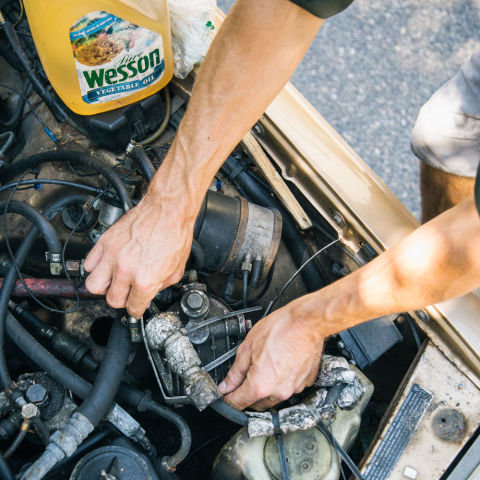
-
Pin
Pat Piasecki
Most Popular
The system included a tank, hoses, a fuel-switching solenoid valve, and a filter head. The additional tank is for the vegetable oil. When you first start the car, it runs off of diesel fuel until the vegetable oil is heated to a level that reduces its viscosity enough that the injection pump can handle it. Once the oil is heated, you flip two switches and start drawing only grease. Coolant keeps the grease warm and flowing on the trip from the tank to the engine.
I put ten gallons of filtered vegetable oil in the tank and waited for a good reason to drive more than a few miles. It worked.
-
Share
-
Tweet
Because my tank was originally used in a pickup truck, it was huge—forty gallons. While this limited fill-ups and extended the car’s range, it also meant I couldn’t put the tank in the trunk, as most converters do. I ended up lashing it down in the backseat. Having the tank inside the car raised the unexpected challenge of how to get the new lines through the firewall and to the engine. Cutting the hole (1.5 inches by 2.5 inches) was truly a brutal ordeal. Because of the contours in the metal and the challenging access, a holesaw turned out to be useless. Instead I hacked away at the steel with a variety of tools, including twist drill bits, hacksaws, hammers, and levers.
Once the hole was complete, things progressed more rapidly. To create the customized coolant circuit necessary to transfer engine heat to the vegetable-fuel filter, line, and tank, I teed into the main coolant line coming out of the engine block, and then ran it back into an accessible segment of hose just before the water pump. It was difficult to tease the air out of the system, but with lots of revving, several test drives, and periodic additions of coolant, I finally got everything to circulate properly.
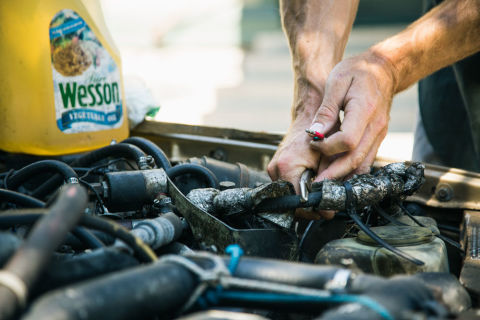
-
Pin
Pat Piasecki
Next was the fuel system. The engine and injection pump required no modifications. The original diesel engine was actually made to run on peanut oil, so as long as fuel viscosity mimics that of petrodiesel, the engine will run normally. I added a length of heater hose with PEX threaded inside, which helps protect against the degradation vegetable oil can cause on plastics and rubber. A dedicated filter head and filter would remove impurities (particles and bits of food) from the oil. And two three-port solenoid valves and their associated circuitry would control the two fuels and keep them adequately separate. After adding numerous lengths of hose to allow for the proper return of unused fuel, and the necessary brass fittings and hose clamps, I turned the key for the first test.
Advertisement – Continue Reading Below
The engine wouldn’t start. It didn’t seem to be pulling any fuel at all, which I eventually realized was a priming issue. Fighting against tight and frustrating access, I had to open up the new hose clamps and fittings and unscrew the fuel filter more times than I care to remember in an attempt to carefully pour diesel fuel into any accessible air pocket. From there I would crank the starter to test my work, giving it frequent rests to cool down. Several times I had to stop everything to recharge the battery. In desperation I even topped off the diesel tank and jacked up the rear of the car to provide the system additional hydraulic leverage. All these approaches were incrementally helpful, and finally the engine reluctantly rumbled to life—coughing, revving, and dying, and then going through the cycle again.
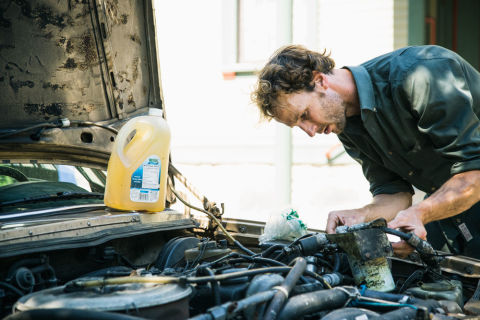
-
Pin
Wheelwright added a bracket to hold the supply valve against the filter head, reducing the amount of tubing and the volume of oil to be heated before the car can switch from diesel.
Pat Piasecki
Most Popular
When it finally ran reliably, and I’d completed a successful test drive, I was ready to wire the solenoid valves. I used a multimeter to identify a positive tab in the fuse box that is only live with the car key in the run position and tapped into it as a power source. Splitting it to provide juice to each valve circuit, I crimped the wires into the solenoid leads, grounded the circuits with eye terminals screwed into the chassis, and pushed four wires through a hole I’d drilled in the corner of the glove compartment. Attaching the two toggle switches at the driver’s-side end of the glove box provided the most visceral satisfaction of the entire project, when the audible click of the valves switching confirmed my success.
I put ten gallons of filtered vegetable oil in the tank and waited for a good reason to drive more than a few miles—long enough for the grease to heat up. When the time came, I ran for several minutes with diesel directed back into the vegetable-oil tank (supply valve off, return valve on) to purge air from the vegetable side, and with some trepidation, flipped the supply valve to on. It worked.
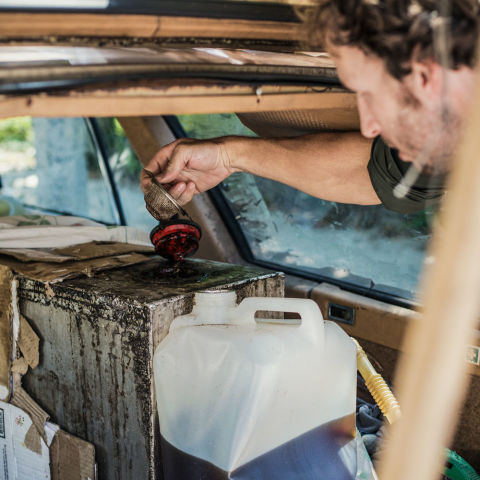
-
Pin
Pat Piasecki
Of course there were a few more issues. I’d hastily chosen not to clean the tank before installation, and every so often a glob of solidified goo would plug the intake line and cause the engine to sputter. I’d have to switch to diesel, find compressed air, and evacuate the line back into the tank. This happened a couple of times before I realized a much easier, if slightly disgusting solution: wiping off the sticky end of the line (and reminding myself that it was basically food), I blew through it. Eventually I did get around to cleaning the tank.
Overall, my grease car’s performance has been very satisfactory. Fuel mileage and power are unaffected by the conversion, and I’ve found fuel collection and processing (all oil ideally should be prefiltered before being put in your car’s grease tank) to be acceptable chores, even if they’re not very clean or always convenient. My oil comes from many different types of restaurants, and as long as I begin with a relatively clean source, filtering (usually using passive solar heat and a sock-shaped filter attached to the lid of a bucket) is relatively uneventful, and even easy. The only real problem is that it tends to make people hungry as I drive by.
This story originally appeared in the June 2016 issue of Popular Mechanics.
<div
Related posts:
No related posts.


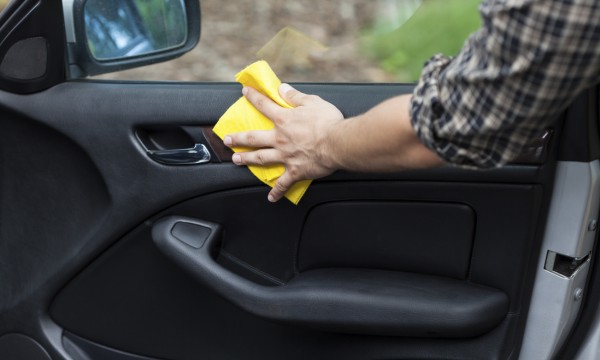
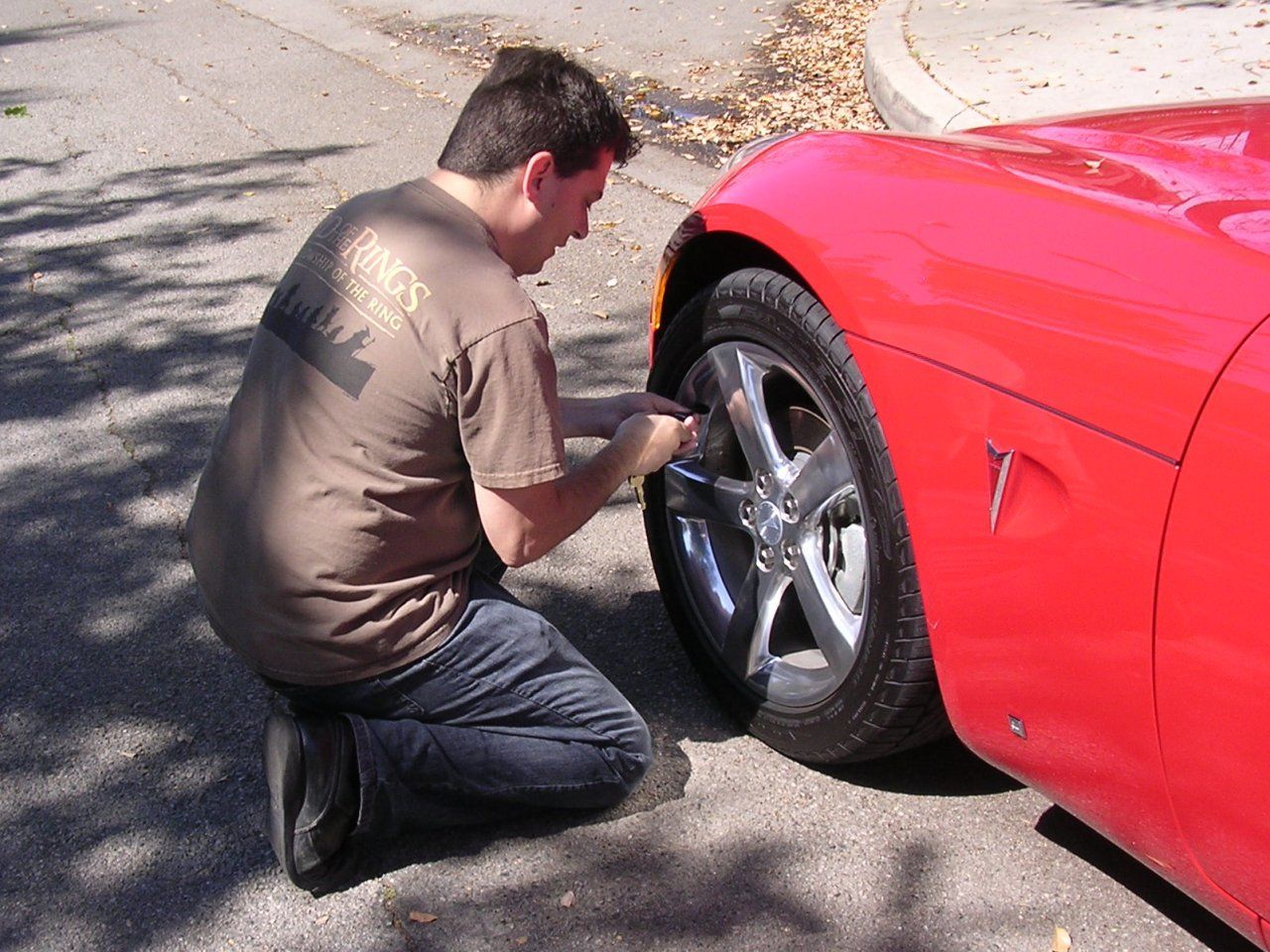
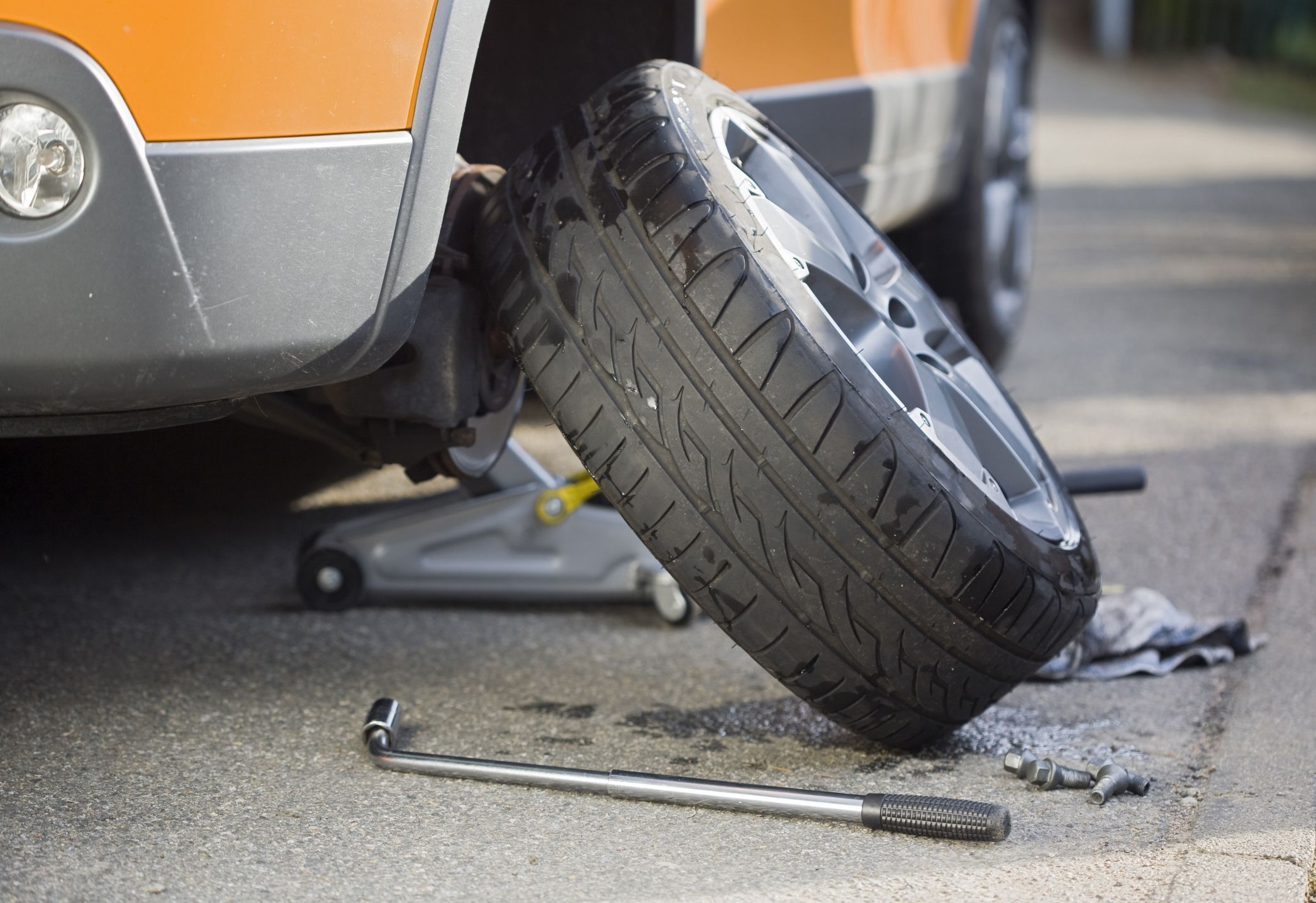

Recent Comments